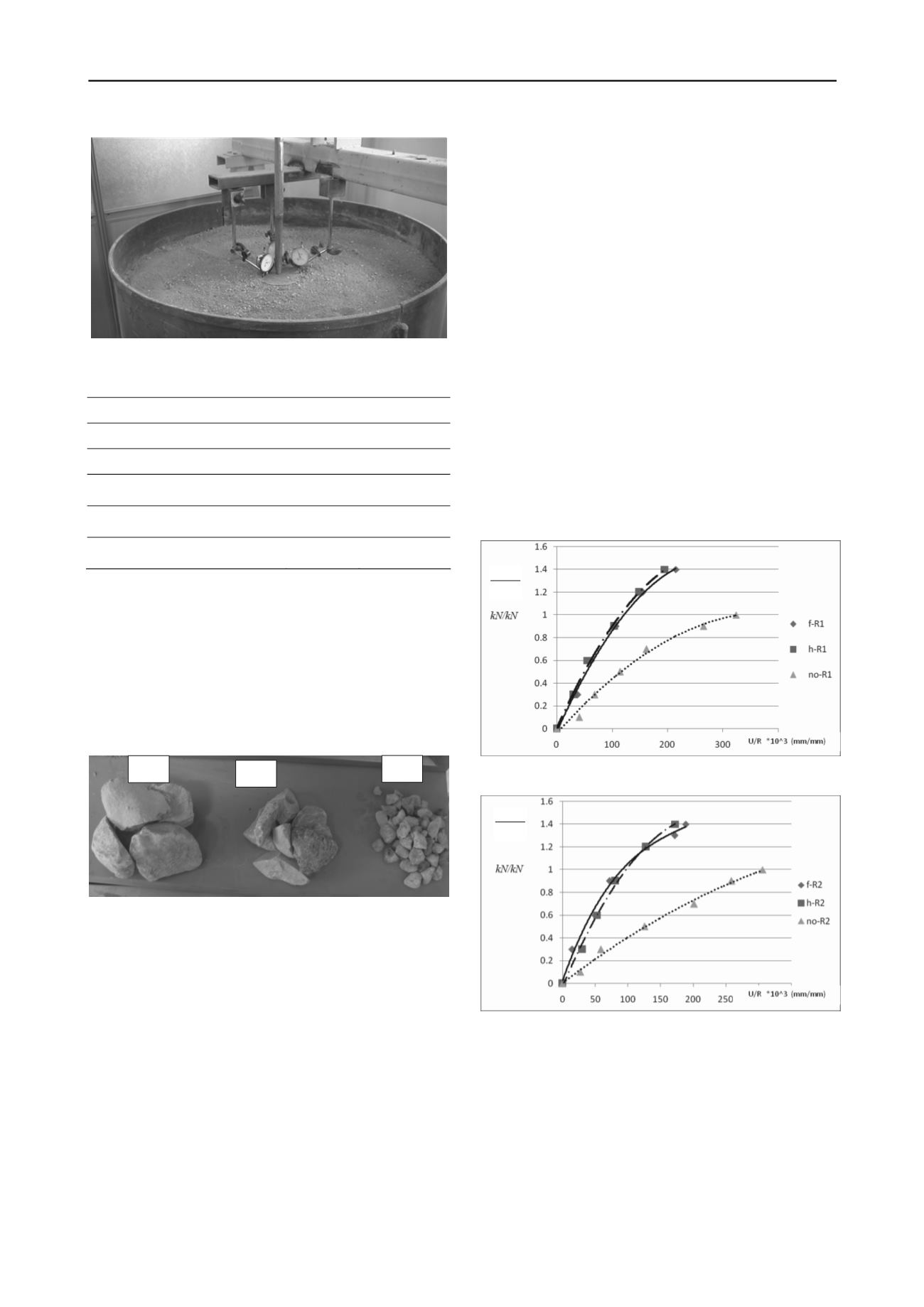
2494
Proceedings of the 18
th
International Conference on Soil Mechanics and Geotechnical Engineering, Paris 2013
figure 1.laboratory setting for model testing.
table 1. physical properties of the soils tested.
parameter
Clay
Sand
friction angle
26.0
35.0
cohesion (Kn/m
2
)
5.0
0.0
Unit weight(Kn/m
3
)
15.0
16.0
liquid limit(%)
44.5
-
plasticity index (%)
20.0
-
then until reaching up to the surface level the stone column
filled with stone aggregates in 10 cm layers.after filling each
layer the cylinder pulled out about 10 cm and aggregates were
poured in and compacted with 40cm length rod.
three types of aggregates were used to fill the stone
columns. these are shown in figure 2.
stone columns with no reinforcement, half-length
reinforcement and full-length reinforcement were prepared for
testing. a commercially available geogrid was used for
reinforcement.
figure 2. different aggregates used as stone columns materials.
3 test resUlts
test results as load settlement curves for stone columns
embedded in cohesive and granular soils are illustrated in
figures 3 an 4. in this figures f-ri, h-ri and no-ri stand for
full-length, half-length and no reinforced column, respectively.
loads were normalized to maximum load obtained for
unreinforced column in each case and settlements were
normalized to radius of stone column.
as it can be seen from these figures it is obvious that
reinforcement improve the bearing capacity of stone columns in
both cohesive and granular soils. the reinforcement however is
more effective in cohesive soil than in granular soil.
further numerical studies (not presented here) showed that
the effect of viscosity is reduced with the increase in cohesion
of soil which in turn caused increase in the confining pressure
of surrounding soil. therefore this results in decrease in stone
column material to spread out within the surrounding soil.
the most important variable in this study was to
experimentally and practically examine the optimal lengthof
reinforcementfor optimal strength. this was achieved by
changing the length of reinforcement compared to the column
length as full-length, half-length and non-reinforced.
test results indicated that in both types of surrounding soils
and for all sizes of column aggregate materials, it is enough to
reinforce only half length of the column to achieve desired
bearing improvement. however the improvement ratein
cohesive soils is more noticeable. this can be related to the fact
that the confining pressure in the bottom of the column is higher
than that in the upper parts of the column due to higher
overburden pressure. By increasing the confining pressure in the
upper parts of the column by installing reinforcement, the radial
strain reduces and as the result, it reduces the side contact
pressure between the soil and stone column. this in turn causes
just vertical distribution of the stresses to the layer below the
column and not distributing of stresses to the surrounding soil.
this obviously causes more vertical deflections in the below
layers of soil and less in the upper layers.
in the half-length reinforced column by increasing in
stresses,a small amount of inflation on the side layers are
observed which results in increase in lateral soil friction and so
the stresses spreads over a larger surface of the soil and it results
the deflection not to increase below the column but spread in
larger area homogeneously.
F
)
max(
no
F
3-a fine aggregate material
r1
r3
r2
)
max(
no
F
F
3-b medium aggregate material


